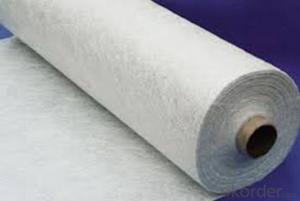Geotextile Layer: A Versatile Solution for Construction and Landscaping
When it comes to construction and landscaping, there is an unsung hero that plays a vital role in the success of many projects, the geotextile layer. This has been a game changer in the industry as we know it, and thus its importance and applications need some insight.
The Essence of Geotextile Layer
A geotextile layer is what? It is a permeable fabric made from synthetic polymers like polyester, polypropylene or polyethylene. These fabrics are meant to be strong enough to withstand various environmental conditions. In civil engineering and landscaping projects, this fabric is generally used for separating, filtering reinforcing or draining.
Separation and Filtration
One of such functions of the geotextiles involves partitioning different types of soils or materials apart. For instance, in road construction it prevents subgrade soil from mixing with base course leading to stable road surface over a long time period. Moreover this layer acts as a filter through which water can pass while retaining soil particles hence preventing erosion thereby maintaining the integrity of structures.
Reinforcement and Stability
In addition to separation and filtration, geotextiles provide reinforcement to the soil. They add tensile strength which helps keep slopes stable by preventing displacement of soil on them. This becomes important especially in areas prone to landslides or where the soils are weak and unstable. By using a geo-textile layer, engineers can create more robust and reliable structures.
Drainage and Erosion Control
The ability of geotextiles to control erosion by managing water flow cannot be underestimated either way. They help direct excess water away from buildings through drainage systems thereby preventing water damage as well as problems with foundation stability. Furthermore these layers also form barriers against runoff induced erosion towards slopes or embankments.
Applications in Landscaping
The use of geotextile layers is not limited to civil engineering. In landscaping, they are used to improve soil conditions, promote healthy root development and enhance the overall beauty of a garden or green space. Landscapers can therefore achieve more environmentally-friendly and aesthetically pleasing results by employing geotextiles.
Personal Touch: My Experience with Geotextile Layer
Working on several projects using geotextile layers has been one thing that I’ve enjoyed doing over time and this has opened my eyes in quite a different way. The first time I saw a geotextile layer in action, it was mind-boggling how such a simple material could have such an impact on the structural integrity and lifetime of a project.
The Future of Geotextile Layer
Geotextile materials are evolving along with advancements in technology. Today we have new types of geo-textiles being engineered with enhanced properties like greater strength and better water management capabilities among others. This progress ensures that the geotextile layer will remain important in construction and landscaping for many more years to come.
Conclusion
To conclude, the geotextile layer is a necessary instrument in construction and landscape engineering. It must be employed in all projects that deal with soil stability and longevity, because of its ability to separate, filter, reinforce and manage water flow. Looking into the future, ongoing improvements in the technology of geotextiles will make them do even more than they currently do. Thus one should bear it in mind when driving on a smooth road or watching a well-kept landscape – sometime you may need to recall about an unpretentious hidden but vital part of it – the Geotextile Layer.







